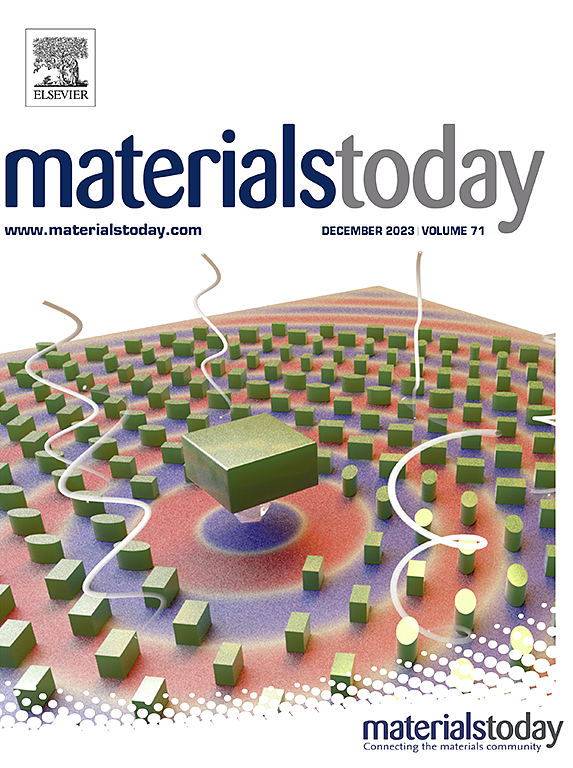Learning from nature: Biomimicry in secondary batteries
IF 21.1
1区 材料科学
Q1 MATERIALS SCIENCE, MULTIDISCIPLINARY
引用次数: 0
Abstract
The composition, structure, and functionality evolved by organisms to adapt to the continuously changing earth environment exhibit the most efficient forms of interaction for energy and matter transfer between biotic and abiotic components, as well as within organisms. Fundamentally, this process involves electron transfer between substances through oxidation–reduction reactions. Due to the efficiency, versatility, and eco-friendliness of biological processes, biomaterials and bio-inspired material structures have become key for seeking technological breakthroughs in rechargeable secondary battery materials. Simultaneously, the design of battery modules and management systems inspired by biological structures and functions has enhanced the adaptability and safety of batteries to complex conditions. This article comprehensively reviews biomimetic techniques in secondary batteries, focusing mainly on bio-inspired materials, battery functions, and management systems that play a beneficial role. It is noteworthy that mechanisms and optimization measures for improving the physicochemical properties and safety of batteries are proposed by comparing the advantages of secondary battery systems with biological systems. Finally, we summarize the forms, prospects, and challenges of biomimetic techniques in the development of secondary batteries and propose directions for the development of biomimetic techniques in secondary batteries.

向自然学习:二次电池的仿生学
生物为了适应不断变化的地球环境而进化出的成分、结构和功能,在生物和非生物组分之间以及生物内部表现出能量和物质传递的最有效的相互作用形式。从根本上说,这一过程涉及通过氧化还原反应在物质之间传递电子。由于生物过程的高效性、多功能性和生态友好性,生物材料和仿生材料结构已成为寻求可充电二次电池材料技术突破的关键。同时,受生物结构和功能启发的电池模块和管理系统的设计,增强了电池对复杂环境的适应性和安全性。本文综述了二次电池的仿生技术,重点介绍了仿生材料、电池功能和管理系统在二次电池中的应用。通过对比二次电池系统与生物电池系统的优势,提出了提高电池理化性能和安全性的机理和优化措施。最后,总结了二次电池仿生技术的发展形式、前景和挑战,并提出了二次电池仿生技术的发展方向。
本文章由计算机程序翻译,如有差异,请以英文原文为准。
求助全文
约1分钟内获得全文
求助全文
来源期刊

Materials Today
工程技术-材料科学:综合
CiteScore
36.30
自引率
1.20%
发文量
237
审稿时长
23 days
期刊介绍:
Materials Today is the leading journal in the Materials Today family, focusing on the latest and most impactful work in the materials science community. With a reputation for excellence in news and reviews, the journal has now expanded its coverage to include original research and aims to be at the forefront of the field.
We welcome comprehensive articles, short communications, and review articles from established leaders in the rapidly evolving fields of materials science and related disciplines. We strive to provide authors with rigorous peer review, fast publication, and maximum exposure for their work. While we only accept the most significant manuscripts, our speedy evaluation process ensures that there are no unnecessary publication delays.
 求助内容:
求助内容: 应助结果提醒方式:
应助结果提醒方式:


